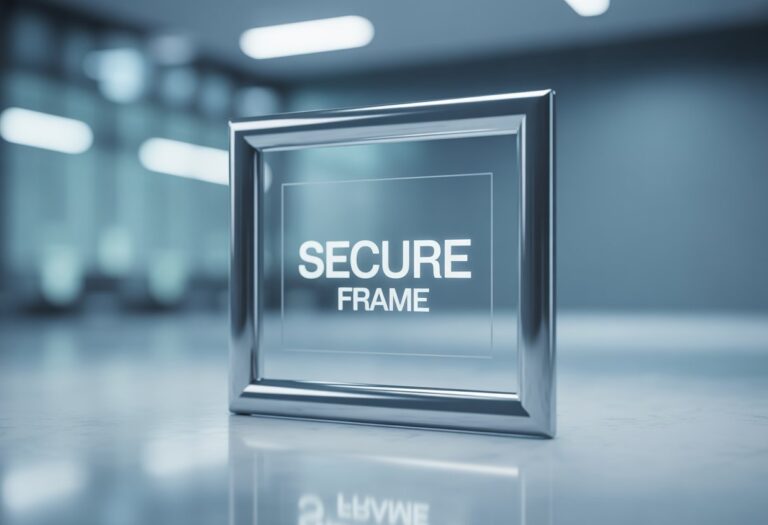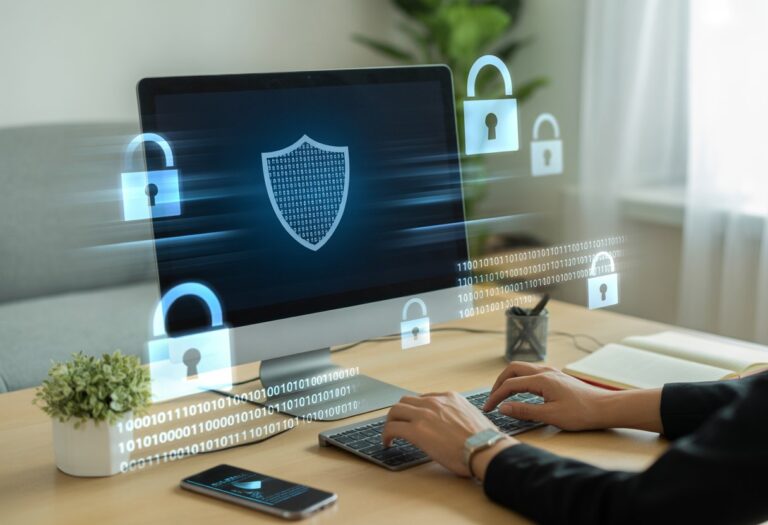How Should Government Owned Removable Media Be Stored for Maximum Security and Ease
When it comes to government owned removable media, storing it securely is very important to protect sensitive information. You should always keep removable media in a secure, approved container based on its security classification. This helps prevent unauthorized access and keeps the data safe from theft or loss.
You also need to make sure the data is encrypted before storage. Encryption scrambles the information, so only people with the right key can read it. Along with this, following your organization’s rules for labeling and handling removable media helps keep everything organized and protected.
By taking these steps, you reduce the risks of data leaks and ensure that your government owned removable media stays safe. Knowing the right way to store and handle this media lets you protect important information more effectively.
Understanding Government-Owned Removable Media

When you handle government-owned removable media, it’s important to know what types exist, why improper storage is risky, and how sensitive data is classified. This knowledge helps you protect important information and follow proper security rules.
Types of Removable Media
Government-owned removable media includes devices you use to store or move data. Common types are USB drives, which are small and portable, and external hard drives, which offer larger storage capacity.
You also have CDs and optical disks, which are less common but still used for archiving or transporting data.
Each type holds data differently, but all can contain sensitive information. Because of this, you need a secure place to keep them when they are not in use. Using only approved media based on your organization’s rules is critical.
Risks of Improper Storage
If you don’t store removable media securely, several problems can happen.
- Data breaches: Unauthorized people might access sensitive data.
- Loss or theft: Devices can be lost or stolen, exposing government secrets.
- System shutdowns: Malware from infected devices can cause systems to crash.
Improper storage also risks national security and disrupts operations. Keeping media in locked cabinets or safes stops these threats. You should always avoid using personal or non-approved devices with government systems.
Classification Levels of Sensitive Data
Not all data on removable media has the same protection level. You’ll deal with different classification levels such as:
| Level | Description | Example Data |
|---|---|---|
| Unclassified | Public or non-sensitive | General info |
| Confidential | Could impact operations if released | Internal reports |
| Secret | Serious damage if leaked | Security plans |
| Top Secret | Extreme national risk if exposed | Critical government files |
You must handle and store removable media according to the data’s classification level. Higher classifications require stronger physical controls and limited access to reduce risks.
Secure Storage Practices for Removable Media

You need to keep government-owned removable media safe by using strong physical protection, encrypting data, limiting who can access it, and maintaining good environmental and security conditions. These steps help prevent theft, loss, or damage to sensitive information.
Physical Storage Solutions
Store removable media like USB drives and external hard drives in locked cabinets or safes. Use GSA-approved containers when possible to meet government security standards. These containers should be kept in rooms with controlled access.
Always label media clearly to avoid confusion and to show the security classification. Keep media in areas monitored by cameras or security personnel to prevent unauthorized use.
When not in use, never leave media unattended in public places, cars, or open desks. Treat it like a valuable item because physical theft is a major risk.
Data Encryption and Protection
Before storing or transporting media, encrypt the data to protect its contents. Encryption makes information unreadable unless someone has the right decryption key.
Use strong encryption standards approved by your organization. This protects sensitive data even if the media is lost or stolen.
Always verify encryption is active before storing media. Combine encryption with regular backups to avoid data loss.
Access Controls and Role-Based Policies
Limit access to removable media by assigning permissions based on roles. Use Role-Based Access Control (RBAC) to ensure only authorized staff can handle or view the data.
Implement multi-factor authentication (MFA) when granting access to sensitive systems that use removable media. This adds an extra layer of security beyond just passwords.
Track who accesses or moves the media with logs and audits to detect unusual activity quickly. Only share access with those who need it for their job.
Environmental and Physical Security Measures
Store media in places with stable temperature and humidity to prevent damage. Avoid areas prone to water leaks, dust, or extreme heat.
Keep storage rooms locked and secure with controlled entry systems such as keycards or biometric locks. Maintain a record of who enters these areas.
Use physical barriers like security cages or safes for high-value or highly sensitive media. Check media periodically for signs of wear or damage to maintain data integrity.
Monitoring and Auditing Removable Media Storage
To keep removable media safe, you need to watch how it is used, check it regularly, and stop anyone without permission from getting to it. Good monitoring and auditing help protect sensitive government data from being lost or stolen.
Tracking and Logging Usage
You should track every time removable media is accessed or moved. Use software that logs who used the device, when, and for what purpose. This helps you see if anything unusual happens, like devices being checked out too often or at odd times.
Keep logs detailed but easy to review. Include the device ID, user name, date, and actions taken. This information supports investigations if data problems occur.
Make sure your tracking system can alert you when activity violates rules. The faster you catch strange use, the better you can stop potential risks.
Regular Audits for Compliance
Regular audits are key to ensuring your removable media storage meets government standards. You need to review logs, check that encryption is in place, and confirm all devices are stored correctly.
Schedule audits at fixed times, like monthly or quarterly. During audits, compare actual device locations to records. This prevents lost or misplaced media.
Audits also help find weak spots in your security setup. You can fix problems before data is in danger. Keep audit records for your security reports and future reviews.
Preventing Unauthorized Access
Access controls are vital for keeping removable media secure. Store devices in locked cabinets, safes, or rooms that only authorized staff can enter. Use keycards, codes, or biometrics to limit entry.
Make sure everyone follows rules about handling media. Training staff on why access control matters helps reduce mistakes or careless actions.
If you spot unauthorized attempts to access media, respond quickly. Lock down the area and investigate. Strong access controls are your first defense against data leaks or theft.
Best Practices for Securing Government Removable Media
To keep removable media safe, you need to focus on proper training, backing up data well, and regularly checking your security efforts. These steps help protect sensitive information and reduce the risks tied to portable storage.
Employee Training and Awareness
You should make sure everyone who handles removable media understands how serious the security risks are. Training should cover correct encryption use, how to spot suspicious activity, and safe storage practices.
Remind your team not to leave devices unattended, especially in public places or cars. Also, employees must not use personal removable media on government systems to avoid introducing malware or data leaks.
Clear rules and regular reminders will help keep your staff alert. Training should occur regularly and update as new threats emerge. You want a well-informed team to reduce human error, which is often the biggest security risk.
Data Backup and Integrity
Reliable backups are essential. You need to back up data stored on removable media regularly to avoid loss or damage. Use strong encryption for backups to keep sensitive information safe.
Check that backup copies are complete and can be restored correctly. Data integrity ensures the backup matches the original files exactly, so you don’t lose vital information during recovery.
Keep backups in locked, controlled areas away from the original media. Using approved, secure devices for backup storage protects against tampering or theft.
Ongoing Review and Improvement
Security isn’t a one-time fix. You must regularly review your policies and how you store removable media to address new threats and weaknesses.
Perform audits to check if your current practices meet security standards and compliance rules. Look for gaps in training, encryption strength, and physical storage safety.
Stay updated with changes in government guidelines and technology advances. Adjust your controls accordingly to keep your data protected against evolving security risks.


